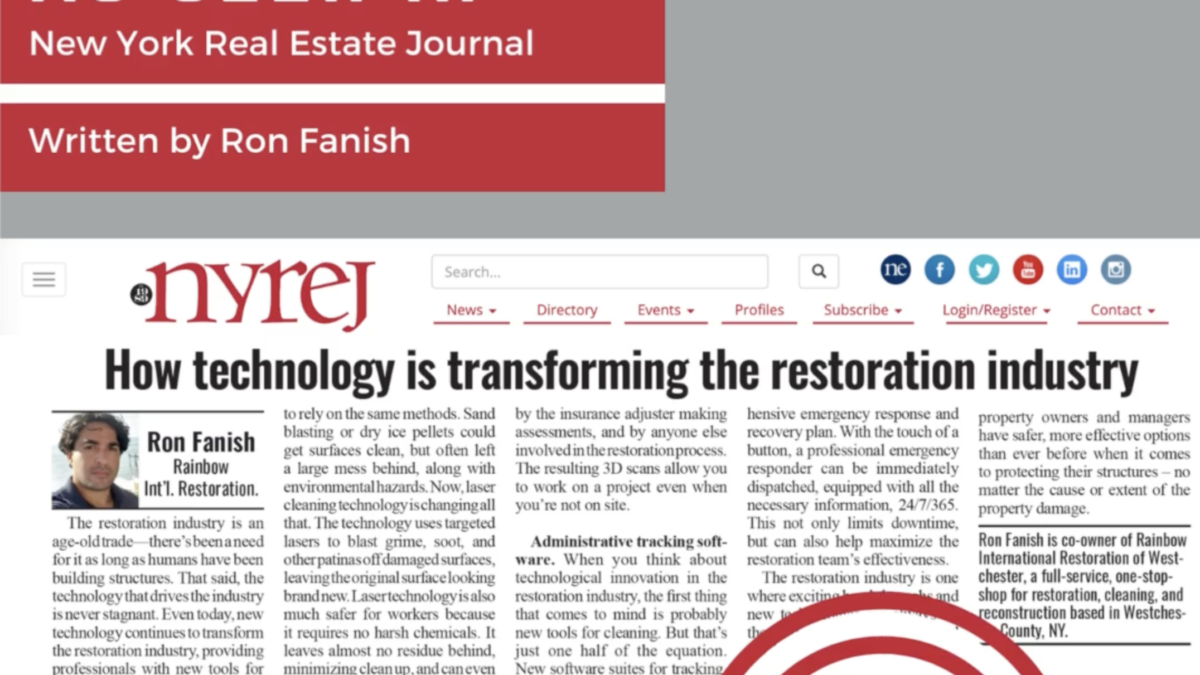
Minimize the Risk of Fire in Construction – by Ron Fanish
October 19, 2022
CUSTOMER SERVICE IN A CRISIS
December 6, 2022
Written by Ron Fanish, Co-Owner of Rainbow Intl Restoration of Westchester
How technology is transforming the restoration industry
The restoration industry is an age-old trade—there’s been a need for it as long as humans have been building structures. That said, the technology that drives the industry is never stagnant. Even today, new technology continues to transform the restoration industry, providing professionals with new tools for their toolboxes and granting clients more efficient and effective ways to restore their properties whether a single-family home or towering skyscraper, in the wake of disaster.
Whether it is new restoration hardware that can be used in the field, or cutting-edge software that makes the restoration process run smoother, industry professionals know there are always innovations on the horizon. Here’s a look at four technologies that are currently transforming the industry:
Laser cleaning technology. For decades, when it came to cleaning surfaces damaged by fire, water, smoke, mold, or other issues, restoration professionals have had to rely on the same methods. Sand blasting or dry ice pellets could get surfaces clean, but often left a large mess behind, along with environmental hazards. Now, laser cleaning technology is changing all that. The technology uses targeted lasers to blast grime, soot, and other patinas off damaged surfaces, leaving the original surface looking brand new. Laser technology is also much safer for workers because it requires no harsh chemicals. It leaves almost no residue behind, minimizing clean up, and can even be automated to save time. Expect to see more and more restoration businesses incorporating laser cleaning technology into their arsenals in the years ahead.
3D scanning technology. Al-though this technology isn’t brand new, it is beginning to become more and more popular in the restoration industry, for good reason. The software allows professionals to capture a picture-perfect, three-di-mensional depiction of a property that’s been damaged with just a single walk through. The resulting images and data then can be used by the property owner or manager, by the contractors making repairs,by the insurance adjuster making assessments, and by anyone else involved in the restoration process. The resulting 3D scans allow you to work on a project even when you’re not on site.
Administrative tracking soft-ware. When you think about technological innovation in the restoration industry, the first thing that comes to mind is probably new tools for cleaning. But that’s just one half of the equation. New software suites for tracking, monitoring, and communicating about jobs and equipment allows professionals to work smarter and swifter. It also provides clients with easier ways to track progress and receive digital updates. This administrative software can be a real game changer for restoration businesses.
Risk management programs and preventative solutions. Ad-vanced planning is essential when it comes to ensuring readiness in the event of an emergency or disaster. Technology solutions now exist to gather building data and site-spe-cific information in under an hour. This invaluable data will provide the basis of a property’s comprehensive emergency response and recovery plan. With the touch of a button, a professional emergency responder can be immediately dispatched, equipped with all the necessary information, 24/7/365. This not only limits downtime, but can also help maximize the restoration team’s effectiveness.
The restoration industry is one where exciting breakthroughs and new technologies are always on the horizon. With software and hardware constantly evolving, property owners and managers have safer, more effective options than ever before when it comes to protecting their structures – no matter the cause or extent of the property damage.




